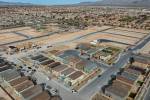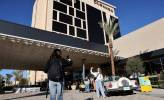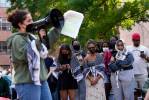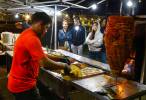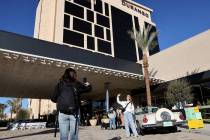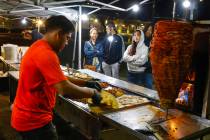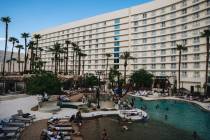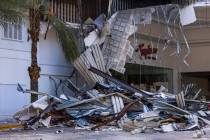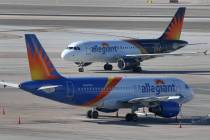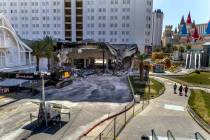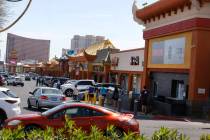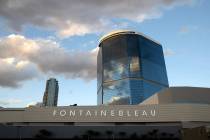Neon Museum hopes to attract more visitors to its Boneyard
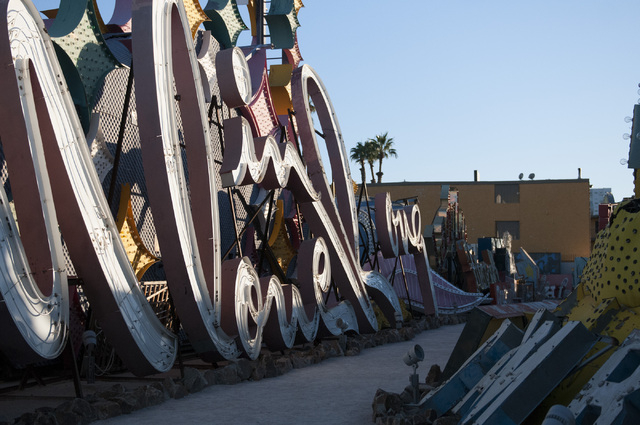
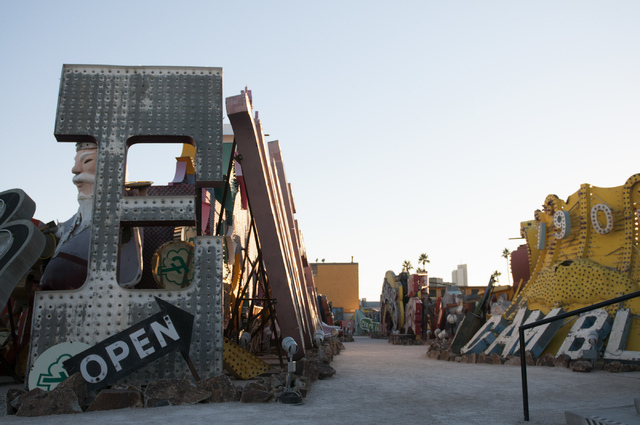


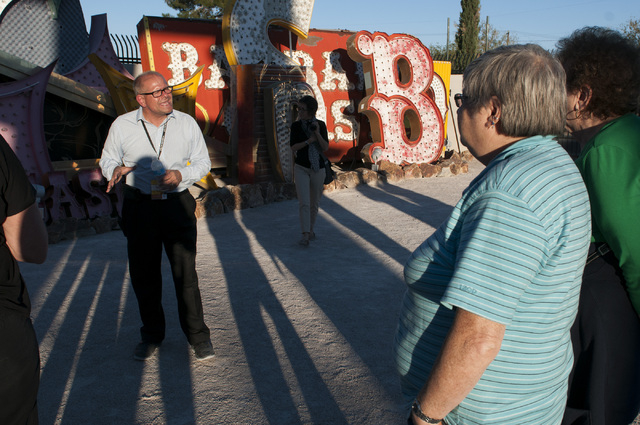
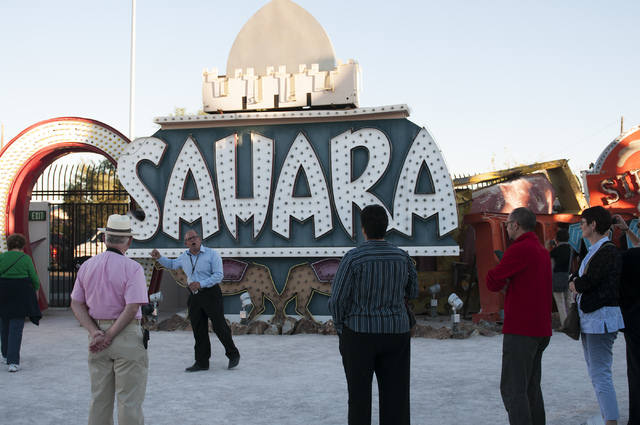



First-time visitor Francis DeCorte found the Strip “kind of a disappointment.”
Yes, he considered the aggregation of light displays and the video walls fronting all the resorts “amazing technology.” Still, he expected something else.
“What I knew about Vegas before and had seen in all the movies was all that neon and all the funky designs,” said DeCorte of Winnipeg, Manitoba. “Fremont Street, that’s the image I always had of Vegas.”
That brought him to the Neon Museum for a midday tour of the Boneyard, the collection of more than 150 signs either cast aside as obsolete by properties such as Caesars Palace or Golden Nugget or the remains of others that have disappeared, including the Sahara, Stardust and Moulin Rouge. Although the nonprofit corporation that runs the museum had led the public through the Boneyard for a couple of years, the musuem hit its stride when the visitor center opened Oct. 27, 2012, in the adapted lobby of the old La Concha motel with its distinctive clamshell roof.
During the first year, 54,200 people took the tours at $18 during the day and $25 at night, up two-thirds from the previous year. Another 5,000 people went through for private tours, commercial photo shoots or other special occasions. Executive Director Danielle Kelly said the numbers came in ahead of “our conservative internal estimate.”
Once the museum finished paying the construction bills — it took $2.8 million to bring the Boneyard to life after more than 15 years of planning, collecting and fundraising — it generated positive cash flow from operations, board Chairman William Marion said. Visitor income during the year grew 47 percent, not including gift shop sales, although the museum did not give specific numbers.
In September alone, however, revenue grew to $128,0000 from $25,000 two years earlier. Last year, the Boneyard was closed while the visitor center was finished.
“Interest and demand for access has been as strong as we hoped it would be,” Marion said.
The majority of visitors buy their tickets ahead of time through the website. “Our visitors come to the museum specifically because they want to see the Neon Museum,” he said.
But its out-of-the-way location, about a half-mile north of Fremont Street on Las Vegas Boulevard North, means that few people decide to see it on an impulse. Marion said the museum will try to raise its visibility with people who don’t read or hear about it before coming to Las Vegas through steps such as a potential ticket kiosk at Container Park downtown.
A sampling of visitors taking midday tours on Tuesday bore out his perception.
Mike Mannon of Houston said he had read about the museum online and decided to indulge his curiosity. “I like industrial archaeology,” he said. “In other words, I’ve always been interested in junk.”
As a concession to her husband, an electrical engineer, Gayle Lindstrom of Palm Beach, Fla., agreed to go to the museum. “It can’t all be fun things,” she said, although she decided afterward that the tour qualified as fun.
But the Boneyard also revived memories of a family trip five decades ago, when neon proliferated on a still-adolescent Strip, as her parents, who disapproved of gambling and the attendant attractions, had to drive through town because there was no other highway.
Her husband, Clay Lindstrom, was impressed by the workmanship of the signs. “Things aren’t made this way anymore.”
By contrast, Las Vegas resident Chiachi Quo had not thought previously about going. “I’m just a tag-along,” she said.
She was playing the classic locals role of showing off the town for friend Mike Shepanek of Portland, Ore., who read a small item about the museum’s anniversary party last month in a tourist-oriented magazine. In past years, he said, he went by the Boneyard and peered through the fence at the signs without buildings, and decided to see them up close.
“I love the history of the old Las Vegas,” he said.
Going forward, Marion said, the museum would like to attract more locals. About 80 percent of the ticket-buyers came from out of state, include one-fourth from other countries.
In addition, he wants to build the base of local financial support. To get the museum to full-fledged operations, it raised about $500,000 from private sources, with the rest an assortment of state, local and federal government grants.
Although the museum is holding its own on operations, it will need fresh capital sources to expand. Marion said the museum would like to acquire more land than the current two acres to put more of its collection on display.
The signs themselves have been donated by hotels as they were remodeled or faced implosion.
In addition, the museum hopes to light up more of its collection. Currently, the museum can flip the on switch on about a half-dozen signs, such as the one for the La Concha or quick wedding information. The others are lit by lights installed on the ground or elsewhere in the Boneyard.
Marion wants to expand the collection of fully restored signs so visitors can see them as tourists did years ago, recognizing that the majority of the signs will remain dark permanently.
Contact reporter Tim O’Reiley at toreiley@reviewjournal.com or at 702-387-5290.





